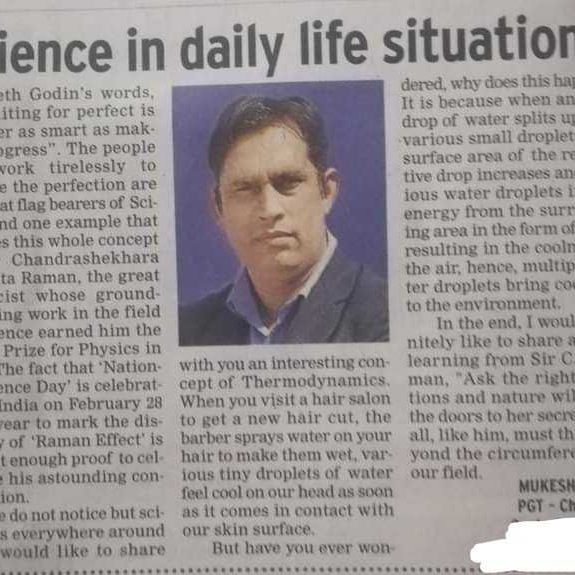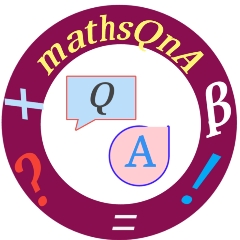Question 5 :
The IUPAC name of haloalkane is always written as a ______ word. 
Question 8 :
Which of the following reactant gives the best method of preparation of alkyl halides when reacts with alcohol?<br/>
Question 10 :
Pure chloroform does not give a white ppt with $AgNO_{3}$ as:<br/>
Question 11 :
Aniline on heating with $X$ in the presence of $KOH$ gives a product with very bad smell. Identify $X$.<br>
Question 12 :
Assertion: Alkyl halides are polar in nature, but they are almost insoluble in water. <br/>Reason: They can neither form Hydrogen bond nor they can break hydrogen bond between water molecules.
Question 15 :
On mixing alkane with chlorine and irradiating with ultraviolet light, it forms only one monochloro alkane. The alkane is: <br/>
Question 17 :
Hydrocarbon (A) reacts with bromine by substitution to form an alkyl bromide which by Wurtz reaction is converted to gaseous hydrocarbon containing less than four carbon atoms. (A) is:
Question 18 :
Which of the following compounds can yield only one monochlorinated product upon free radical chlorination?
Question 19 :
Choose the correct answer among the alternatives given :Bromination of methane in presence of sunlight is a:
Question 20 :
An alkane $C_6H_{14}$ gives only two monochloro derivatives on chlorination. Its possible structure is:
Question 22 :
$\underset{a}{CH_3 }\, - \,\underset{b}{CH_2 }\, - \,\underset{c} {CH_2} \, - \,\underset{d} CH_2 \, - \, F$<br>Arrangethe hydrogens $a, b, c, d,$ indecreasing order of their reactivities towards chlorination:<br>
Question 23 :
${ CH }_{ 2 }={ CH }_{ 2 }+{ Br }_{ 2 }\xrightarrow { NaCl } \quad Products$. Which of the following product is not formed in the above reaction?
Question 28 :
Assertion: Aqueous hydrohalogen acids are used to prepare alkyl halides from alkenes.
Reason: Hydrogen iodide readily reacts with alkenes to form alkyl halides.
Question 29 :
Choose the correct answer among the alternatives given : <br/>The reaction $CH_2=CH-CH_3 \, + \, HBr \, \rightarrow \, CH_3-\overset {Br}{\overset{|}{C}}H-CH_3$ is an example of ?
Question 30 :
Identify the products X and Y formed in the following reaction:<br/><br/>$CH_3-CH_2-CH=CH-CH_3\, + \, HCl \, \rightarrow \, X \, +\, Y$<br/>
Question 31 :
Assertion: Chlorination of allylic hydrogen is difficult than vinylic hydrogen
Reason: Allyl radical is stabilized by resonance.
Question 32 :
In the presence of iodine catalyst, chlorine reacts with acetic acid toform
Question 33 :
Assertion: $CH_2=CH-CH_2-X$ is an example of allyl halides.
Reason: These are the compounds in which the halogen atom is bonded to an $sp^2$ hybridised carbon atom.
Question 34 :
Assertion: Iodination of alkanes is carried out under reflux conditions in the presence of reducing agent.<br/> Because
Reason: Iodination of alkanes take place explosively.
Question 35 :
Which gives maximum yield of ${ C }_{ 2 }{ H }_{ 5 }Cl$?
Question 36 :
$2$-methyl butane on reaction with $Br_{2}$ in thepresence of sunlight mainlygives:<br>
Question 37 :
Assertion: Statement-I : free radical chlorination of $n$-butane gives $72\%$ of $2$-chlorobutane and $28\%$ of $1$-chlorobutane though it has six primary and four secondary hydrogens. <br> Because
Reason: Statement-II : A secondary hydrogen is abstracted more easily than the primary hydrogen.
Question 38 :
The halogen which is most reactive in the halogenation of alkanes under sunlight is:
Question 39 :
The organic compound obtained during the addition of $HBr$ to propene in the presence of peroxide catalyst is:
Question 40 :
<br/>$CH_3-\overset{CH_3}{\overset{|}{C}}H-CH_2-CH_3+Br_2\xrightarrow[]{hv}$ P (Major product)                                                                  (on monobromination) The product P is :
Question 41 :
The chlorination of ethane is an example for which type of the following reactions?
Question 46 :
Among the isomers of $C_6H_14$ , which will give maximum number of mono-chloro-derivatives ?
Question 47 :
Which step is chain propagation step in the following mechanism?<br/>$Cl_2\xrightarrow [  ]{ hv } Cl^{\bullet} + Cl^{\bullet}$<br/>$Cl^{\bullet} + CH_4\rightarrow \,^{\bullet}CH_3 + HCl$<br/>$Cl^{\bullet} + Cl^{\bullet} \rightarrow Cl_2$<br/>$^{\bullet}CH_3 + ^{\bullet} Cl \rightarrow CH_3Cl$<br/>
Question 48 :
Which reagent will you use for the following reaction?<br>$CH_3CH_2CH_2CH_3 \rightarrow CH_3CH_2CH_2CH_2Cl + CH_3CH_2CHClCH_3$<br>
Question 49 :
The reaction conditions leading to the best yield of ${C}_{2}{H}_{5}Cl$ are:
Question 52 :
Which major product is formed in the free-radical bromination of methane by limited supply of bromine?
Question 54 :
$CH_3 - CH_2 - CH_2 - \underset{CH_3}{\underset{|}{CH}} - CH_3 \xrightarrow[hv]{Cl_2} $ product, at room temperature.<br>Choose the correct option
Question 55 :
The starting material for the manufacture of polyvinyl chloride is obtained by reacting $HCl$ with:
Question 56 :
$HBr$ reacts with $CH_{2} = CH - OCH_{3}$ under anhydrous conditions at room temperature to give:
Question 57 :
Statement - 1 : $CH_3 - CH_2 - Cl + NaI \overset{Acetone}{\rightarrow}$ $CH_3 - CH_2 - I + NaCl $<br/>Statement - 2 : Acetone is polar - protic solvent and solubility order of sodium halides decreases dramatically in order $NaI > NaBr > NaCl$. The last being virtually insoluble in the solvent and a $1^0$ and $2^0$ chloro alkane in acetone is completely driven to the side of Iodoalkane by the precipitation reaction.
Question 58 :
Choose the correct answer among the alternatives given :<br/>$CH_3-{\underset{Br}{\underset{|}{CH}}}-CH_3\xrightarrow{[alc KOH]}X\xrightarrow[HBr]{peroxide}Y\xrightarrow[NaI]{acetone}Z$ In the given reaction what will be the final product?
Question 59 :
$CH_3-CH-CH_3+Cl_2\xrightarrow[]{hv}P$ (Major product)              $|$                                       (on monochlorination)             $CH_3$<br/>The product $P$ is:
Question 60 :
Action hydrogen chloride on $CH_3 - \underset{CH_3}{\underset{|}{C}} = CH_2$ and $CH \equiv CH$ will predominantly give the compounds, respectively
Question 61 :
The decreasing order of dipole moment of the following is :<br/>$I. {CH}_{3}Cl$  $II. {CH}_{3}Br$  $III. {CH}_{3}F$
Question 63 :
Markovnikov's rule for the addition of hydrogen halides to alkenes states that the incoming hydrogen bonds to the :
Question 65 :
For the compounds  $CH_3Cl, CH_3Br, CH_3I$ and $CH_3F$, the correct order of increasing C-halogen bond length is:
Question 67 :
A solution of $(R)-2-$iodobutane, $[\alpha]= 15.9^{\circ}$ in acetone is treated with radioactive iodied, until $1.0$% of iodobutane contain radioactive iodine, the specific rotation of recovered iodobutane is found to be $-15.58^{\circ},$ which statement is correct about above information?
Question 68 :
Anisole can be prepared by the action of methyl iodide on sodium phenate. The reaction is called:
Question 69 :
The reaction conditions leading to the best yield of $C_2H_5Cl $ are:
Question 70 :
A 10g mixture of iso-butane and iso-butene requires 20 g of $Br_2$ (in $CCl_4$)for complete addition. If 10 g of the mixture is catalytically hydrogenated andthe entire alkane is monobrominated in the presence of light at $127^{\circ}$C, how muchof it would be formed? (Atomic weight of bromine = 80)
Question 71 :
Which of the followin are used as free radical chain initiators?
Question 72 :
When alkyl halide is heated with an aqueous solution of silver nitrite,it gives:
Question 73 :
Ethyl alcohol reacts at a faster rate with $HI$ than with $HCl$ in forming the corresponding ethyl halides under identical conditions mainly because:
Question 75 :
In which of the following cases $C-C$ bond length will be the longest?
Question 76 :
Carbon reacts with chlorine to form $CCl_4$. 36 gm of carbon was mixed with 142 g of $Cl_2$. Calculate the mass of $CCl_4$ produced in the reaction.
Question 77 :
Arrange the following in increasing order of their nucleophilicity in a polar aprotic solvent.<br/>${{ CH }_{ 3 }{ CH }_{ 2 }O }^{ - },{{ CH }_{ 3 }{ CH }_{ 2 }S }^{ - },{{ CH }_{ 3 }{ CS }_{ 2 } }^{ - }$<br/>
Question 78 :
Arrange the following in the increasing order of their ability as a leaving group:$CF_3SO_3^-,\,CH_3SO_3^-\,and\,CH_3COO^-$
Question 79 :
$ (X) +KCN  \longrightarrow CH_3CN \quad  \xrightarrow {2H_2/Ni} CH_3CH_2NH_2 $ what is (X) ?
Question 80 :
Action of alcoholic $AgNO_3$ on chlorobenzene is similar to the action on:
Question 81 :
Assertion: Addition of one equivalent of $HCl$ to 1,3-butadiene at ${80}^{o}C$ gives 3-chloro-1-butene as major product.
Reason: 3-chloro-1-butene is a kinetically controlled product.<br/>Read the above assertion and reason and choose the correct option regarding it.
Question 82 :
Assertion: Iodoform gives precipitate with $AgNO_{3}$ on heating while $CHCl_{3}$ does not.
Reason: $C-I$ bond being less stable than $C-Cl$ bond and thus on heating heterolytic cleavage of $C-I$ form $I$ which gives yellow precipitate with $AgNO_{3}$.
Question 83 :
Arrange following compounds according to their reactivity with alc. silver nitrate.




























